-
Making slums more resilient to climate change
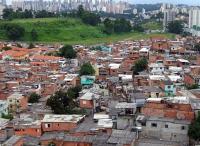
In our rapidly urbanizing world, access to sanitation, transportation, and other essential services remains a challenge for more than a billion people. In the world’s poorest and most vulnerable urban communities, finding new ways to meet these day-to-day human needs not only leads to sustainable development, it also fortifies them against the effects of climate-induced disasters.
-
-
Building cyber security testbed to help protect the power grid
It is easy to think of the electrical grid as the power plants, the high voltage lines, the transmission towers, the substations, and all the low-voltage distribution lines that bring power to our homes and businesses. An attack on that grid would involve getting out and cutting lines or dropping towers. But there is another, less visible piece to the grid — all the computers and communication networks that make it work. Attackers can go after the cyber grid, too. They can do it from a desktop. At no real cost. Potentially from anywhere in the world. With few if any clues left behind.
-
-
Flint Water Study research team to present findings on Thursday

Virginia Tech’s Marc Edwards and his team of research scientists and students will give a presentation on Thursday, 28 January, in Blacksburg to outline their work — done in collaboration with Flint, Michigan, residents — which exposed widespread lead-in-water contamination. The presentation will provide an overview of the Flint Water Study team’s efforts combining ethics engineering, citizen science, laboratory experiments, investigative science, and social media to confirm the high lead levels in Flint’s water.
-
-
Piping as poison: the Flint water crisis and America’s toxic infrastructure
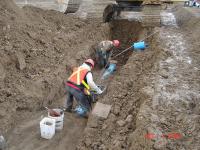
As the crisis over the water in Flint, Michigan, rolls on, we’re learning more and more about the irresponsibility and callousness of officials and politicians in charge. The mix of austerity politics, environmental racism, and sheer ineptitude makes for a shocking brew, yet the physical conditions that have made it literally toxic for Flint residents are neither as exceptional nor as recent as much of the media coverage suggests. An estimated three to six million miles of lead pipes across the United States still carry water, and most all of them are vulnerable to similar dangers, whether at the hands of short-sighted and prejudicial bureaucrats or politicians whose ideology or opportunism leads them to blithely dismiss well-established science. The best solution would be to replace our lead lines systematically and proactively, not just one crisis-beset city at a time. Until we do so, it’s a safe bet that more Flints lie on our horizon.
-
-
Rapid, affordable energy transformation in U.S. possible
The United States could slash greenhouse gas emissions from power production by up to 78 percent below 1990 levels within fifteen years while meeting increased demand, according to a new study. The study used a sophisticated mathematical model to evaluate future cost, demand, generation, and transmission scenarios. It found that with improvements in transmission infrastructure, weather-driven renewable resources could supply most of the nation’s electricity at costs similar to today’s.
-
-
De-icing concrete to improve roadway safety
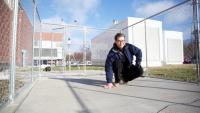
Researchers have developed a concrete which de-ices itself by adding a pinch of steel shavings and a dash of carbon particles to a traditional concrete recipe. Though the newest ingredients constitute just 20 percent of the otherwise standard concrete mixture, they conduct enough electricity to melt ice and snow in the worst winter storms while remaining safe to the touch.
-
-
Global water supply under increasing pressure
A new study projects that global demand for water could more than double by 2050, increasing pressure on already scarce water resources. “Our current water use habits increase the risk of being unable to maintain sustainable food production and economic development for the future generation,” says one researcher. Water efficiency and water saving measures could stabilize demand.
-
-
Breakthrough in continuous monitoring of CO2 leaks from carbon storage sites
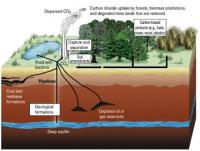
Underground storage of CO2 produced from fossil fuel burning, rather than releasing it into the atmosphere, could play an important role in suppressing climate change. Ensuring that the CO2 does not leak from the storage site is key – but the high number of surveys necessary to make sure there is no CO2 leak makes this a costly endeavor. A team of Japanese researchers may have found a means of achieving easier and lower-cost monitoring for leaks of CO2 stored in underground reservoirs.
-
-
As climate warms, Colorado high peaks lose glaciers
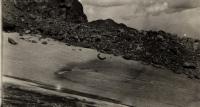
Melting of ice on Niwot Ridge and the adjacent Green Lakes Valley in the high mountains west of Boulder, Colorado, is likely to progress as climate continues to warm, scientists have found. Their study reveals declines in ice — glaciers, permafrost, subsurface ice, lake ice — in the Niwot Ridge area over the past thirty years. For glaciers like Arikaree, the time left may be counted in years, not centuries nor millennia, says one expert.
-
-
Cyberattack on Ukraine grid: here’s how it worked and perhaps why it was done
On 23 December 2015, two days before Christmas, the power grid in the Ivano-Frankivsk region of Ukraine went down for a reported six hours, leaving about half the homes in the region with a population of 1.4 million without power. Because of its success, the incident has sent shock waves through cybersecurity circles. Could this happen in the West? In short, yes. This incident underscores the need for diligence and the increased effort in cybersecurity that we are seeing in the government and private sectors. The continuously increasing dependence on the power grid is driving the need for cybersecurity to be part of the design of all new systems.
-
-
Sandia Labs playing a leading role in grid modernization

Sandia National Laboratories is leading the Security and Resilience area of the Department of Energy’s (DOE) Grid Modernization Laboratory Consortium (GMLC), saying it is bringing its research capability in grid modernization to help the nation modernize its power grid. The consortium includes scientists and engineers from across fourteen DOE national labs and dozens of industry, academic, and state and local government partners, aligned into six technical areas.
-
-
Protecting drinking water
We place high demands on the quality of our drinking water. If pathogens or toxic substances found their way into the piping system, many people could become infected or injured very quickly. This is why this risk must be kept low. To do this, experts have developed technologies for a comprehensive monitoring, early warning and emergency management system.
-
-
Freshwater vulnerability threatens developing nations' stability
Many nations and regions already facing uncertain political futures must contend with a growing threat to stabilization: freshwater vulnerability. An analysis of 119 low-income countries finds common challenges that could inform broad solutions.
-
-
With plutonium-238 sample, ORNL restores U.S. capability dormant for nearly thirty years
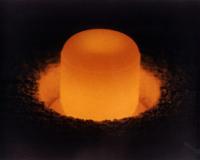
With the production of fifty grams of plutonium-238, researchers at the Department of Energy’s Oak Ridge National Laboratory have restored a U.S. capability dormant for nearly thirty years and set the course to provide power for NASA and other missions. There are currently only thirty-five kilograms, or about seventy-seven pounds, of plutonium-238 set aside for NASA missions, and only about half of this supply meets power specifications. This is only sufficient to power two to three proposed NASA missions through the middle of the 2020s.
-
-
Global learning required to prevent carbon capture, storage from being abandoned
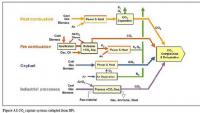
Governments should not be abandoning carbon capture and storage, argues a Cambridge researcher, as it is the only realistic way of dramatically reducing carbon emissions. Instead, they should be investing in global approaches to learn what works – and what doesn’t.
-
More headlines
The long view
Helping Strengthen America’s Critical Infrastructure
Everyday life depends on a robust infrastructure network that provides access to running water, communications technology and electricity, among other basic necessities. The experts who keep our national infrastructure secure and resilient also need a strong network to share their knowledge and train the next generation of professionals capable of solving complex infrastructure challenges.
AI and the Future of the U.S. Electric Grid
Despite its age, the U.S. electric grid remains one of the great workhorses of modern life. Whether it can maintain that performance over the next few years may determine how well the U.S. competes in an AI-driven world.
Using Liquid Air for Grid-Scale Energy Storage
New research finds liquid air energy storage could be the lowest-cost option for ensuring a continuous power supply on a future grid dominated by carbon-free but intermittent sources of electricity.
Enhanced Geothermal Systems: A Promising Source of Round-the-Clock Energy
With its capacity to provide 24/7 power, many are warming up to the prospect of geothermal energy. Scientists are currently working to advance human-made reservoirs in Earth’s deep subsurface to stimulate the activity that exists within natural geothermal systems.
Experts Discuss Geothermal Potential
Geothermal energy harnesses the heat from within Earth—the term comes from the Greek words geo (earth) and therme (heat). It is an energy source that has the potential to power all our energy needs for billions of years.
